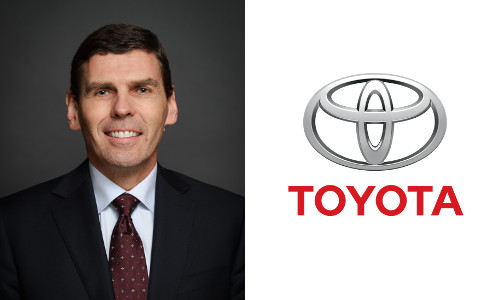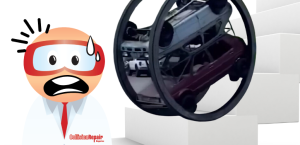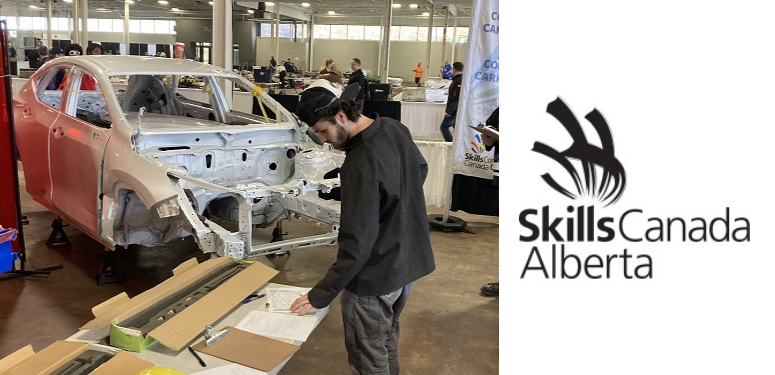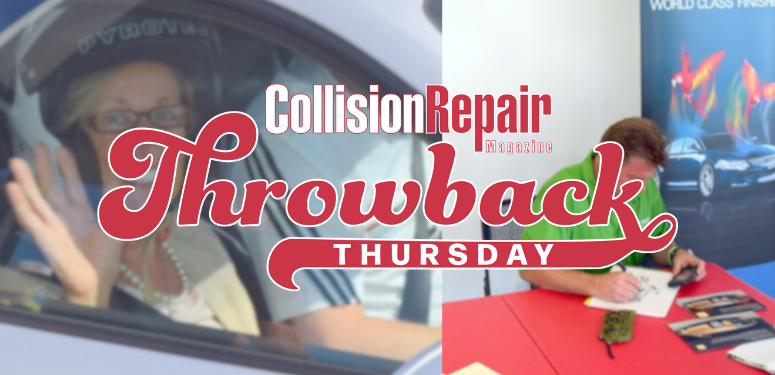By Jeff Sanford
Toronto, Ontario — November 16, 2017 — In this week’s Autonomous Report, Toyota Canada head talks AVs, Lyft launches in Canada, and much, much more.
Larry Hutchinson, President and CEO of Toyota Canada Inc., was the keynote speaker last week at the 2017 TalkAUTO conference. The event brought together a room full of Canadian automotive industry influencers. According to Hutchinson’s speech, the autonomous vehicle is a great opportunity for the automotive industry and will change society as we know it – just don’t expect it to happen tomorrow. Hutchinson has been with Toyota Canada for 31 years. That is, he has a deep understanding of the modern car industry. According to a press release noting his appearance, Hutchinson thinks we’ve never seen the pace of change that we’re seeing right now. “I don’t think there’s ever been a better, more exciting time to be a part of the automotive industry,” he said in his speech. “Automated vehicle technology is going to revolutionize mobility – and transform society – in ways more profound than the move from the horse-drawn carriage to the Model T.” He went on to talk about the reason underpinning the shift to AVs. He stressed that, for Toyota, the primary goal of vehicle autonomy is its impact on safety. “Safety improvements alone justify the investments being made,” he said.
He also noted that safety is just one of the benefits. Among other improvements, Hutchinson mentioned more fluid traffic flow and streets free of congestion, as well as increased mobility for many segments of our population. “Think about the life-changing impact autonomous vehicles will have on the millions of people who have mobility challenges: older people, people with disabilities and people who can’t afford their own car. In the future, they’ll have access to mobility we just can’t provide today,” Hutchinson was quoted as saying. Interestingly, according to the press release, Toyota has been working in the AV space since the early 1990s. The company has invested billions of dollars in AV R&D and now has more patents in the field than any other company. According to the release, “By the end of 2017, Toyota Safety Sense or Lexus Safety System and advanced vehicle safety technology will be standard on almost 95 percent of the Toyota and Lexus vehicles sold in Canada.” Hutchinson went on to stress that his company’s focus isn’t on, “… getting there first. It’s on getting it right.” According to Hutchinson, “How safe is safe? When do we decide it’s okay to roll a technology out into millions of vehicles? For us, it’s clear: Safety is paramount. So nothing goes on or into a Toyota until it’s proven.”
Some of the other realities of the new AV world, according to Hutchinson, include:
- Autonomous vehicles are coming, but not as fast as many think. Autonomous vehicles will arrive – the benefits are too great – but they are not going to be here tomorrow.
- For the foreseeable future our roads will be home to an increasing mix of vehicles: conventional, automated and, eventually, autonomous.
- There’s still a lot of work to be done before fully autonomous vehicles are the norm. Not only is much more research required to perfect the technology, but there is work to do to prepare society for its arrival.
- Ethics, regulations, infrastructure, and consumer appetite will all be important hurdles to the mainstreaming of autonomous vehicles.
Hutchinson also said that many people will want to drive in the future, even if AVs are available. “We believe people will still want to drive in the future. Not just sit in boxes,” he says. He also encouraged Canadian distributors and dealers to see the approach of autonomous as an opportunity. He had some comments for those working at dealerships, which was an interesting part of his address. “With increasingly automated vehicles, the dealership experience will become even richer and more valuable to the customer,” said Hutchinson. He predicted that “…dealers will be more important than ever. And the industry will see new business opportunities, new revenue streams and new areas of growth.” With representatives from key stakeholders in this process (automakers, government) in the room, Hutchinson explained that the Canadian industry has already started on the journey to provide Canadians with automated vehicle technologies. He stressed that they will need to continue to work closely together to make it happen. “It’s going to take the combined efforts of governments, insurance companies, manufacturers, and all kinds of other players to make the mainstream adoption of autonomous vehicles a reality,” said Hutchinson. “We need to start laying the groundwork today for what will be on our roads tomorrow.”
Another public event this week in Canada was the Presidents of Enterprising Organizations (PEO) annual member conference. Held last Thursday just north of Toronto the PEO is “a Canadian leadership advisory firm for business leaders to discuss important issues, solve problems and explore new opportunities.” At this most recent gathering leaders discussed what was called the fourth industrial revolution. As artificial intelligence comes together with AV technology, robots, learning-based software, computer vision and new sensors like cheap LiDAR, a new and massive shift in the industrial economy is occurring. Today, of course, construction robots that can download a blueprint and use GPS and sensors to move around a construction site are coming online. Long-haul trucks that can pilot the nation’s highways without human intervention are also on the horizon. As well, digital networking technology is increasingly being built into material infrastructure. What is emerging is a new industrial economic system that merges computers and machines in a much tighter weave than ever before.
A 2011 report from Germany called this fourth industrial revolution “Industry 4.0.” The report, prepared by businessmen, politicians, and academics, defined this new era as one in which the efficiency of manufacturing industries will be dramatically increased through the integration of “cyber-physical systems,” or CPS. CPS, being a term that describes the coming, “… integration of smart, internet-connected machines and human labor,” according to one definition. At the PEO event this week attendees discussed how it is this fourth industrial revolution will, “… proceed at a pace that is much quicker than the previous three, namely, the use of water and steam power to mechanize production, the use of electric power to create mass production and the use of electronics and information technology to automate production.” One of the speakers at the event, a tech industry entrepreneur, was quoted as saying, “Every industry is going to be impacted more quickly than any of us can imagine.” The report from the Financial Post went on to say, “… there will be more casualties, especially for those which don’t have the required skills to cope – all of which could present considerable social problems given that it’s possible much of the population won’t have jobs… Accordingly adaptation – as ultimately occurred in the three previous revolutions following periods of huge dislocation and unemployment – is required.” The well-known founding director of the Munk School for Global Affairs at the University of Toronto, said, “… governments are not in a good position to respond because they have been stripped down. We have built our own nightmare.”
The Residential and Civil Construction Alliance of Ontario (RCCAO) released a presser this week indicating its approval of a recent announcement by Ontario Premier Kathleen Wynne. According to the RCCAO press release,Wynne has signalled a strong commitment by the province in the development of self-driving vehicles by launching the $80 million Autonomous Vehicle Innovation Network (AVIN) in Stratford. According to Andy Manahan, Executive Director of RCCAO, “Premier Wynne, Transportation Minister Steven Del Duca and the Ontario government have proven that they are committed to the future. This announcement is a worthwhile initiative. There is a lot we can learn from conducting pilot tests at AVIN, but there is more to be done to usher in a new era for our roads and for improving mobility.”
As a way of contributing to the conversation RCCAO recently commissioned a report “Ontario Must Prepare for Vehicle Automation: How Governance Can Influence its Outcome,” to outline some issues. The report was written by systems engineer and futurist Bern Grush. He was quoted as saying that self-driving vehicles eventually will replace entire fleets of taxis and buses in the form of driverless robo-taxis and robo-shuttles. In preparation Grush proposes a governance system which would use, “… analytics, incorporating digital tools to set a subsidy and pricing system, optimize distribution and consider social performance of commercial fleets,” according to the press release. These factors have to be “accounted” for as the province and the federal government take important steps to facilitate the adoption of vehicle automation said Manahan. He points to Ford Motor Co. spending $1 billion to take over a robotics start-up earlier this year as part of its plan to have a driverless vehicle on the road by 2021. “Ontario should pay close attention to moves by other jurisdictions and automakers to ensure it becomes a global leader in automotive innovation and intelligence,” said Manahan. “Ultimately, Ontario could mitigate traffic congestion through the sharing economy and be a global leader in deployment of self-driving cars. The government must be very forward looking as it makes key decisions on future infrastructure and transit investments.”
It seems that the ride-sharing world described in the RCCAO report is rapidly coming into existence in this country. A report prepared by Ottawa City Council on the issue of ride-sharing companies like Uber found that company, “… made 6.36 million trips originating from Ottawa in the first 12 months under a new bylaw governing the taxi industry and [ride sharing companies]. That is a remarkable number of trips. And it is no surprise that Ottawa cabbies are up in arms. But the competition continues to mount. This past week news arrived that Uber’s biggest competitor, Lyft, will make its first foray out of the US and into Canada. In Ottawa that company will need to get a so-called private transportation company (PTC) licence from city hall. “It would join Uber and Teslift as PTC licence holders in Ottawa. [A city official] said there the city is reviewing another ‘active’ PTC application but didn’t disclose details,” according to a report from the Ottawa Business Journal.
The story also notes that, “One year after Ottawa city council gave Uber the green light, city staff say they’ve had relatively few problems and are not planning to require Uber drivers to install cameras in their cars… The city released its one-year review of the ride-hailing service last week. The report sheds some light on the service, which has a higher proportion of residents using the service than all other Canadian cities… In the first year of being legal, Uber drivers gave 49 million kilometres of rides in the city. Much of the activity is focused on downtown… One-third of all trips began downtown, and one-third ended there as well,” according to a news report. City staff said that they are “not aware of any complaints from the public regarding safety or any violations of the law committed by Uber Canada,” the story notes. The chief of bylaws in the city was quoted as saying, “The rate of compliance is very high.” Bylaw officers have been checking Uber drivers to ensure, “… they are not doing things such as accepting cash, or hailing rides from the street – essentially, to make sure they aren’t acting like taxis.”
Another story from the world of emerging AV fleet services is news that major US auto service company, AutoNation, “… will maintain and repair the driverless vehicles that Alphabet’s Waymo is testing.” A media report from the US notes a service deal has been signed between Alphabet Inc.’s driverless-car unit Waymo and AutoNation Inc. According to the report this, “… could speed up a wave of consolidation that would reduce the number of US car dealerships to just a handful of ‘mega fleet managers’.” The major Wall Street investment bank, Morgan Stanley, released a report that, “… hailed the deal as a win for AutoNation the largest car-dealership chain in the US” According to the Morgan Stanley analysts, “The US car dealer pie is worth $1 trillion, split between 10,000 owners, and ‘tech disruption’ could consolidate the number to ‘as few as 10 monolithic mega-fleet managers supporting the future shared autonomous transportation ecosystem’.” The partnership was hailed as a “milestone” that connects, “… a publicly traded auto retailer to the evolution of the industry, taking it from a business-to-consumer business model to a business-to-business model,” according to the Morgan Stanley analysts. The report went on to suggest that, “In a world of fully autonomous cars, auto dealers may actually sell nothing.” That is, according to the analysts, “We see the business morphing into a 100 percent service model where the value of real estate and assets in the field will be critical to maintaining a safe, reliable, comfortable and nice smelling fleet.” Interesting times, indeed.
Another report on the impending arrival of Lyft’s President in Canada has the Co-Founder of the company, John Zimmer, saying he expects, “Toronto will likely become one of the ride-sharing company’s top five markets overall.” The report notes that Uber has set up a lab in Toronto to test self-driving cars. In a September 2016 blog post Zimmer predicted that by 2021 the majority of Lyft rides would be in “autonomous fleet vehicles.” Interestingly, Lyft is partly funded by CapitalG, a growth investment fund run by Google parent company Alphabet. At the same time, another Alphabet company, Sidewalk Labs, has just signed a deal with the city of Toronto to build a digital neighborhood from the ground up in Toronto’s east end that is expected to include self-driving cars and potentially buses. In a report from The Star, Zimmer is quoted as saying, “The bigger vision for Lyft is to say, for the last 100 years our cities have been shaped by car culture and by car infrastructure, and by car ownership specifically. That’s led to traffic, high expense, cities paved over. We can allow our cities to be redesigned around the people living in them instead of the cars parked in them. That’s the bigger vision, and I think all of the things that we are seeing happening in Toronto are other reasons why we want to be there and we want to be part of that discussion and part of making sure that happens.” Arguing against Zimmer is Kristine Hubbard, the operations of major Toronto cab firm, Beck Taxi. In the article she is quoted as saying she, “… expects Lyft’s entry to worsen Toronto gridlock. It’s another reason to encourage cars to cruise the streets of our city – many of them who come from outside it – who otherwise wouldn’t be there.” The idea that ride-sharing firms increase gridlock rather than lessening it (as supporters argue) finds confirmation in a recent traffic study performed in New York City and reported in last week’s CRM Autonomous Report.





































